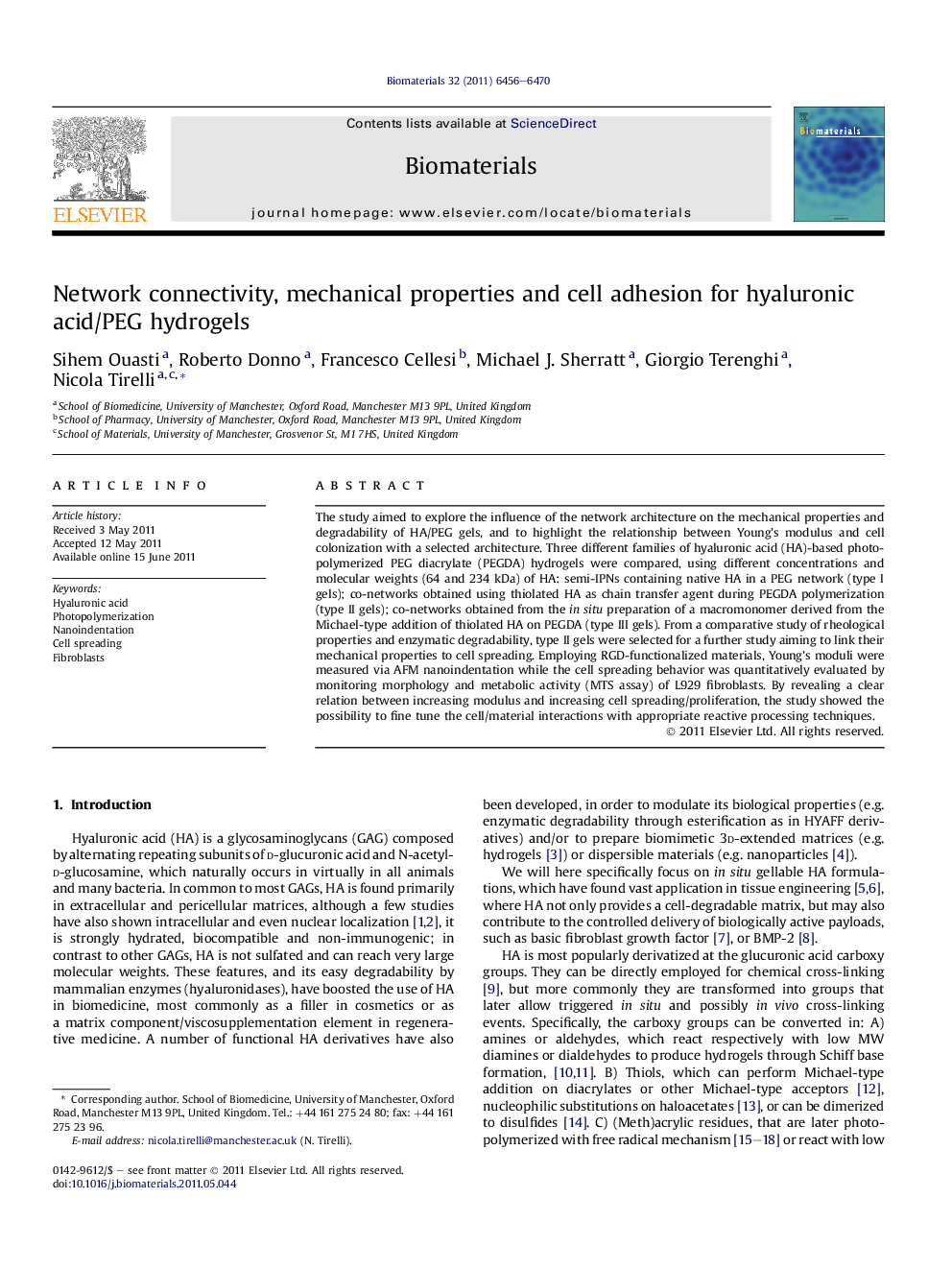| Article ID | Journal | Published Year | Pages | File Type |
|---|---|---|---|---|
| 10229569 | Biomaterials | 2011 | 15 Pages |
Abstract
The study aimed to explore the influence of the network architecture on the mechanical properties and degradability of HA/PEG gels, and to highlight the relationship between Young's modulus and cell colonization with a selected architecture. Three different families of hyaluronic acid (HA)-based photopolymerized PEG diacrylate (PEGDA) hydrogels were compared, using different concentrations and molecular weights (64 and 234Â kDa) of HA: semi-IPNs containing native HA in a PEG network (type I gels); co-networks obtained using thiolated HA as chain transfer agent during PEGDA polymerization (type II gels); co-networks obtained from the in situ preparation of a macromonomer derived from the Michael-type addition of thiolated HA on PEGDA (type III gels). From a comparative study of rheological properties and enzymatic degradability, type II gels were selected for a further study aiming to link their mechanical properties to cell spreading. Employing RGD-functionalized materials, Young's moduli were measured via AFM nanoindentation while the cell spreading behavior was quantitatively evaluated by monitoring morphology and metabolic activity (MTS assay) of L929 fibroblasts. By revealing a clear relation between increasing modulus and increasing cell spreading/proliferation, the study showed the possibility to fine tune the cell/material interactions with appropriate reactive processing techniques.
Related Topics
Physical Sciences and Engineering
Chemical Engineering
Bioengineering
Authors
Sihem Ouasti, Roberto Donno, Francesco Cellesi, Michael J. Sherratt, Giorgio Terenghi, Nicola Tirelli,
